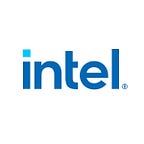An illustrated guide to computer vision
By Pearly Tan and Jodi Wing
This story was originally published on iQ by Intel
as part of the Science of Seeing series. In this series, iQ looks at the many ways our perception of technology is evolving, and how technology’s ability to perceive us is shaping the future. We’ll explore innovations that pique our senses and enhance the science of seeing. Head over to the special edition of iQ to read the full series.
A computer sees in numbers, assigning hex codes representing specific color values to each pixel in an image. Here’s one way a computer tries to understand what it’s looking at.
The computer identifies more specific color shades and uses different methods to distinguish the foreground from the background. One uses color gradients to help determine the edges of the different objects.
To learn more, the computer scans for lines that meet at an angle. The features, known as corners, are the building blocks the computer uses to get a more sophisticated sense of the information in the image.
To further distinguish like objects, the computer determines how the texture in the image differ from one another.
Once it’s isolated the foreground image, the computer uses different techniques to determine what it is. It can look for objects it recognizes, filling in the image with any match. It also uses algorithms to help identify the image.
A complete picture emerges. Computers are getting more accurate every day, but still only figure out what they’re looking at about half the time.
What if your computer could see like you? A special issue of iQ Science of Seeing. See the stories.
